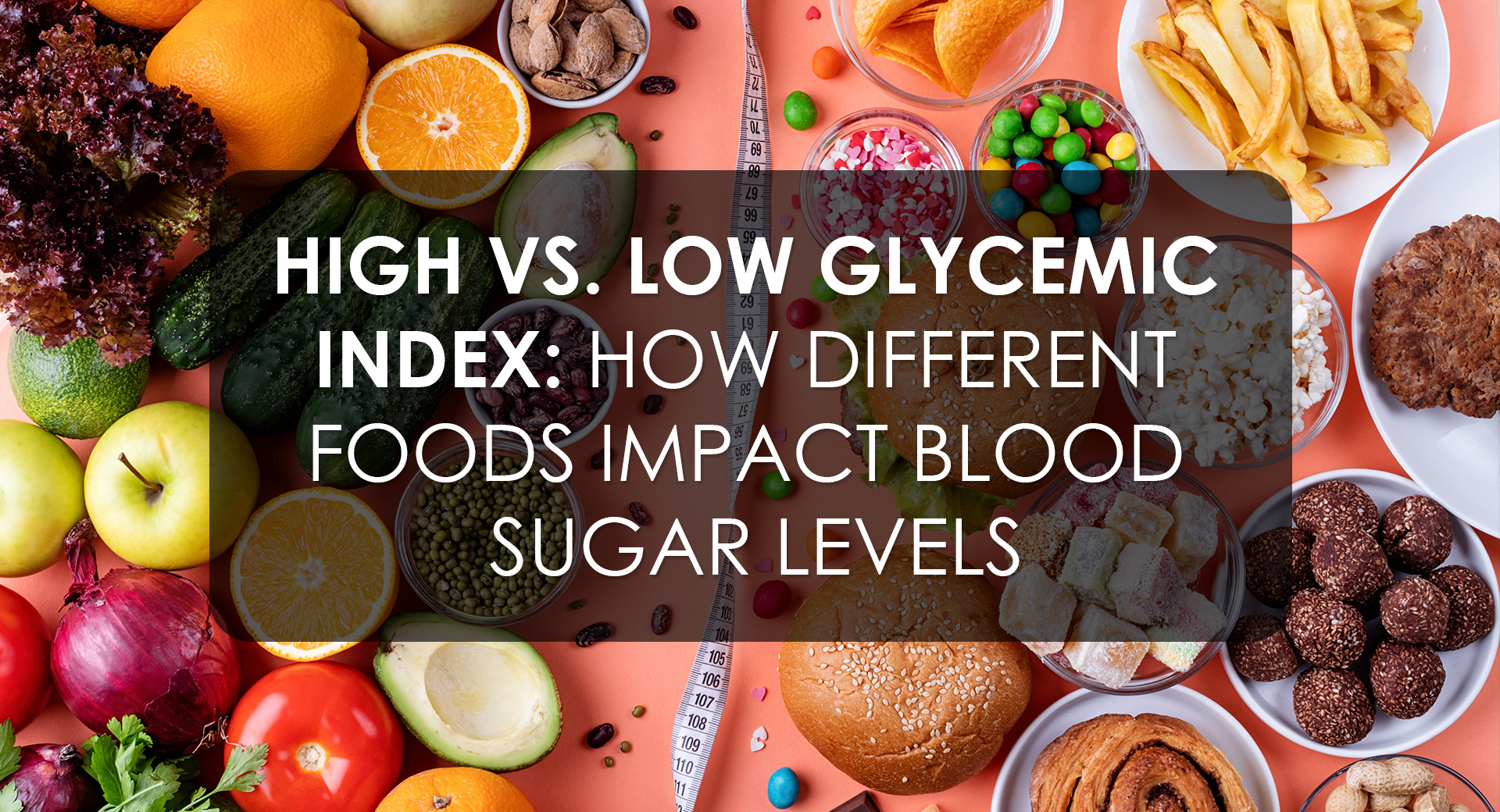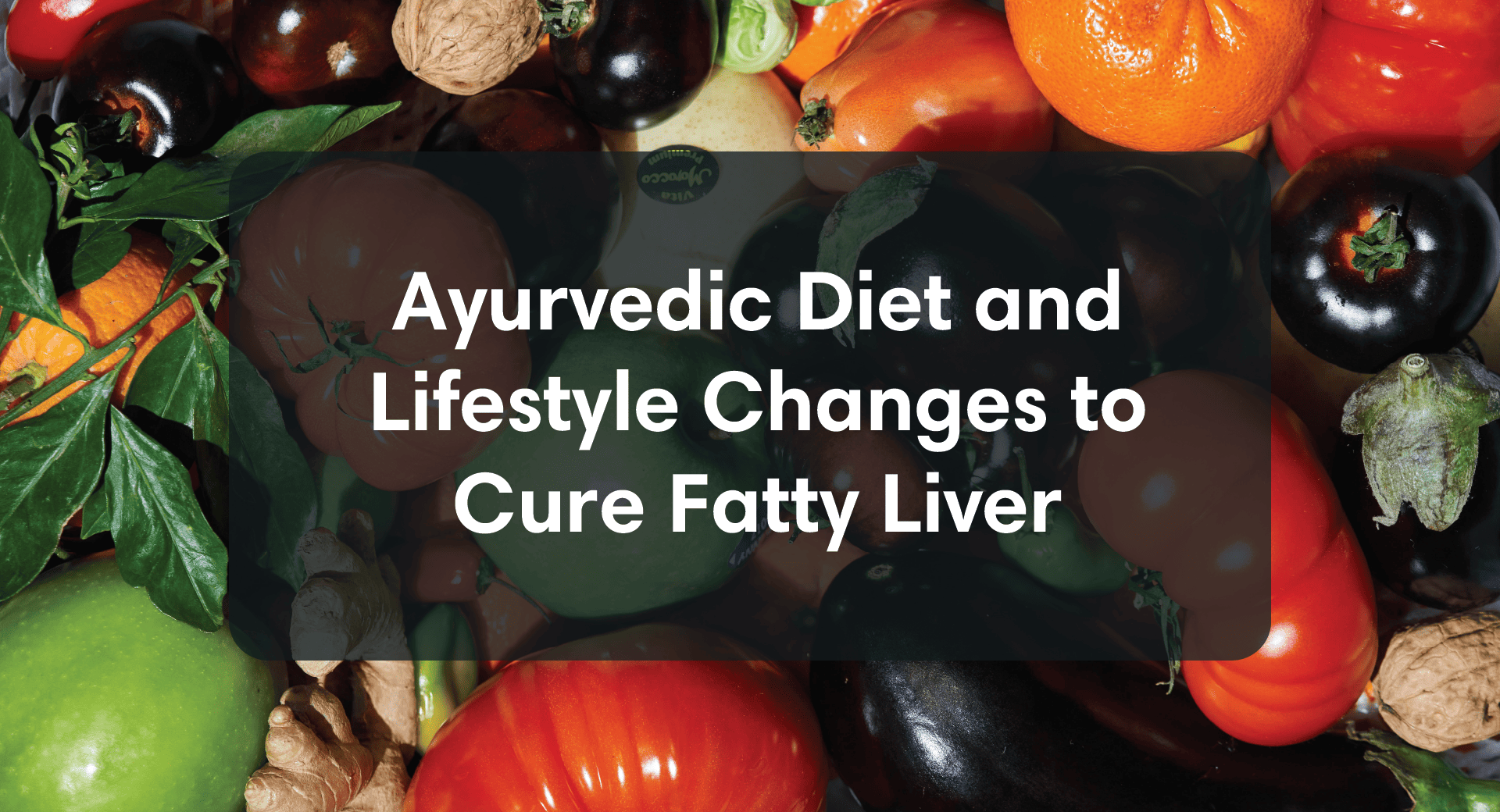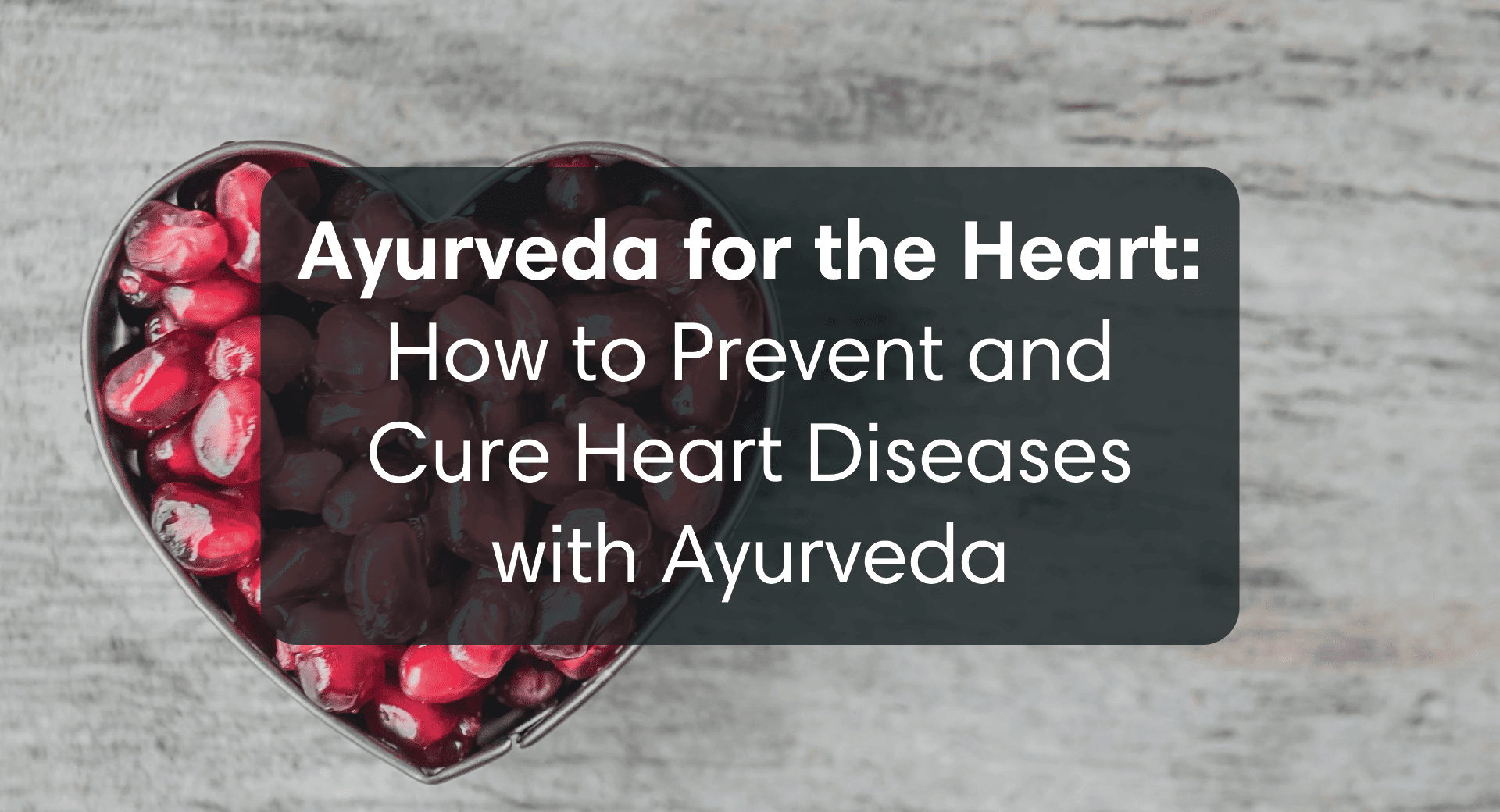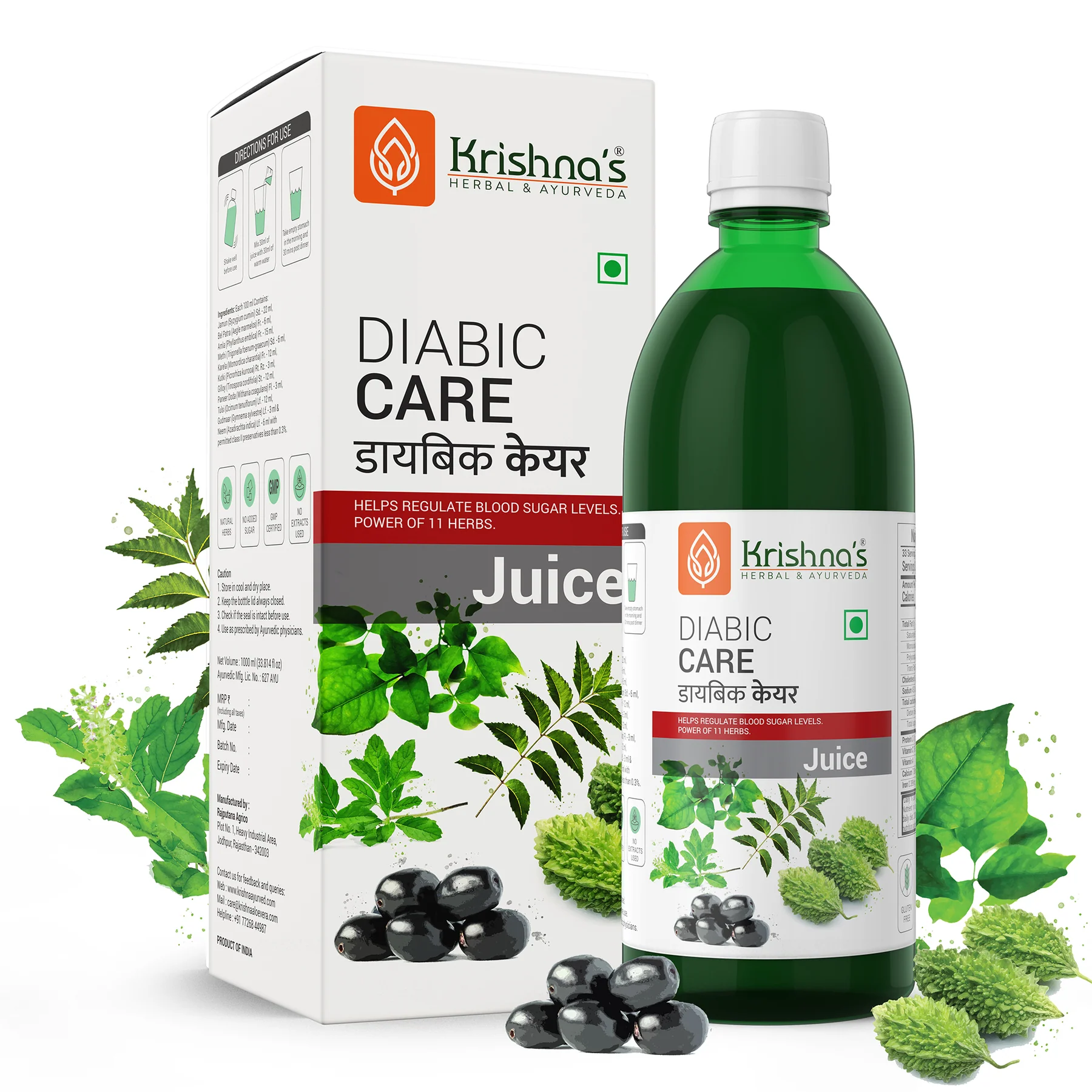High vs. Low Glycemic Index: How Different Foods Impact Blood Sugar Levels

You take your diabetes medications on time, skip the sugar in your tea, and avoid dessert treats, but your blood sugar levels are still high. If this is what you’re struggling with, it might be time to rethink the foods you put on your plate.
Did you know that every meal you eat affects your blood sugar levels? This is why making careful food choices is important when you have diabetes.
Living with diabetes can often feel like navigating a maze of information about what to eat and what to avoid. The key to managing diabetes is understanding the glycemic index and choosing foods that won’t cause drastic spikes in your blood sugar.
Follow along to learn why the Glycemic Index is important for diabetes control and about the Glycemic Index of different foods that you consume on a regular basis.
Dealing with diabetes? Explore a wide range of preservative-free Ayurvedic Diabetes Care Products to help you on your journey to better health.
The Role of Glycemic Index in Diabetes Management
The glycemic index (GI) is a measurement tool that gives you an idea of how much a specific food can make your blood glucose (sugar) rise.
Every food you eat is digested and absorbed at different rates. The carbohydrates are broken down into glucose which then enters your blood circulation.
Foods with a high glycemic index break down quickly during digestion and cause a rapid increase in blood glucose levels. These foods can sustain elevated blood glucose levels longer than low-GI foods, which are digested and absorbed more slowly, leading to a gradual release of glucose in the blood.
Sustained high blood sugar levels have negative health effects especially if you have diabetes. Research shows that regular consumption of foods high in glycemic index can worsen your condition and lead to complications like high cholesterol, high blood pressure, and heart problems. Therefore, understanding the GI is imperative if you have diabetes, as it can be used as a guide for selecting the right foods to promote better blood sugar management.
What Counts as High, Medium, And Low GI?
Foods are rated as low, medium, or high glycemic and are measured on a scale from 0 to 100, where 100 is the value for pure glucose. Foods on the lower end of the scale have little effect on blood sugar levels, while those on the higher end of the scale have a big effect on blood sugar.
Here is how GI is categorized:
- Low: 55 or less (causes a slow and steady increase in blood sugar)
- Medium: 56–69 (results in a moderate increase in blood sugar)
- High: 70 or above (causes a quick rise in blood sugar)
The number range of the glycemic index for different foods is usually the starting point value. These values can be affected by several factors before the item hits your plate. These include:
The type of carbohydrate it contains The effect on blood sugar varies with different types of carbohydrates. For example, whole grains have complex carbohydrates so they have a lower GI, while refined sugar has simple carbohydrates so it has a high GI.
The amount of fibre, fat, or other nutrient content it has– The presence of fibre, fat, and other nutrients also generally lowers a food’s glycaemic response.
Its cooking method– The longer a food is cooked, the faster it gets digested, and thus the higher its GI.
Its ripeness– Unripe fruits and vegetables have complex carbs that turn into sugars as they ripen. Thus, riper fruits have a higher GI.
The amount of processing it has undergone– Highly processed foods often have a higher GI because processing breaks down complex carbohydrates into simpler sugars, resulting in quicker digestion and absorption.
Read more : Low Glycemic Index Snacks for People With Diabetes
Impact of High and Low GI Foods on Blood Sugar Levels
Now that you have a better understanding of what GI is and how different foods are categorized according to their GI range, let’s learn how a high and low GI food can impact your blood sugar levels.
What happens when you eat high-GI foods?
When you eat food that has a high GI value, your blood sugar levels spike rapidly. This triggers your pancreas to release more insulin, an important hormone that converts blood glucose into energy. Initially, you will experience a burst of energy due to the rapid increase of glucose in your cells. However, this energy spike is generally short-term. Too much insulin makes your blood sugar levels drop quickly, causing a sudden energy crash and feelings of fatigue.
This sudden drop in blood sugar levels promotes cravings, overeating and insulin resistance, a condition where your body’s cells become less responsive to insulin’s effects.
Insulin resistance can lead to type 2 diabetes, and if you already have this condition, this response may be inadequate, leading to a prolonged period of elevated blood sugar.
So, the higher the GI, the greater the impact on blood sugar.
What happens when you eat low-GI foods?
Low GI foods keep you feeling full for a longer time because they are digested and absorbed more slowly. This gradual digestion leads to a slow and steady increase in blood glucose levels.
Because low-GI foods provide a steady supply of glucose to your blood, they help to maintain consistent energy levels throughout the day. You’re less likely to experience the energy highs and lows associated with rapid fluctuations in blood sugar levels. Swapping high GI foods for low GI foods is a good idea, especially if you have diabetes.
The benefits of switching to low-GI foods are:
- Regulates blood sugar levels.
- Aids in weight loss.
- Decreases cholesterol levels, promoting heart health.
- Improves blood pressure and reduces the risk of complications.
Photo Credits: [Source]
Glycemic Index Chart for Common Foods
Grains, Breads & Cereals
| Low GI Foods (<55) |
| Buckwheat (Kuttu) Black rice Quinoa Multigrain bread Rolled oats Steel cut oats Poha Daliya Barley Black-eye peas (Lobia) Green gram Soybean Kidney beans (Rajma) Red gram dal (Tur dal) Black chickpeas (Kala chana) Split pigeon peas (Arhar dal) SoybeansChickpeas (Channa) |
| Medium GI Foods (56 – 69) |
| Muesli Rawa Rye Brown rice Couscous Parboiled rice Jowar |
| High GI Foods (>70) |
| White rice Amaranth White bread Refined flour (Maida) Instant Noodles Instant Pasta Cornflakes Cereal Bars Instant Oats Rice Porridge Other Breakfast Cereals(Chocos, Honey Loops, Fruit Loops, etc) |
Vegetables
| Low GI Foods (<55) |
| Bitter gourd (Karela) Bottle gourd (Doodhi/Lauki) Broccoli Cabbage Capsicum Carrots (Raw) Cauliflower Cucumber Eggplant (Baingan/Brinjal) Fenugreek (Methi) Green peas Okra Onion Spinach (Palak) Zucchini Tomatoes Green beans |
| Medium GI Foods (56 – 69) |
| Yam Sweet potatoes Beetroot Plantains (Green Banana) |
| High GI Foods (>70) |
| Pumpkin White potato |
Fruits
| Low GI Foods (<55) |
| Apple Pear Plum Cherries Strawberries Guava Blueberries Peach Pomegranate Kiwi Sweet lime Orange Blackberries Apricots (Dried) Grapefruit Coconut Prunes Avocado Custard apple Raspberry Mulberries Lemon Lichee |
| Medium GI Foods (56 – 69) |
| Banana (Ripe) Cantaloupe Papaya Raisins |
| High GI Foods (>70) |
| Banana (Brown, Overripe) Watermelon Grapes Muskmelon |
Dairy products
| Low GI Foods (<55) |
| Whole milk Almond Milk Soy Milk Frozen Yogurt Greek Yogurt Cheese (Cheddar, Swiss, Brie, Goat) Paneer Buttermilk |
| Medium GI Foods (56 – 69) |
| Ice cream Flavoured Yoghurt |
| High GI Foods (>70) |
| Rice Milk |
Snacks And Others
| Low GI Foods (<55) |
| Dark Chocolate Milk chocolate Walnuts Almonds Sunflower or pumpkin seeds Peanuts Pistachio |
| Medium GI Foods (56 – 69) |
| Popcorn Honey Maple Syrup Soft Drinks Table sugar Brown sugar Sabudana Upma |
| High GI Foods (>70) |
| Jaggery Sodas Cakes & Cookies Rice Crisps Cheese Crackers Chips Dosa Idli Pongal |
Quick Tips to Plan Your Meal With The Glycemic Index
By referring to the glycemic index of different foods mentioned in the chart above, you can choose foods with lower values. Here are a few tips to help you plan your meals better:
- Choose foods with a low to medium GI, as they often contain more fiber, vitamins & minerals. which are beneficial for overall health.
- Consider factors like ripeness and cooking methods when making food choices.
- Opt for cooking methods that can lower the GI of foods. such as steaming or boiling vegetables.
- Pay attention to portions and aim for a balanced meal containing high protein and fibre, along with a carbohydrate source.
- Be mindful of eating processed foods, which often have higher GI values.
Takeaway
Knowing the glycemic index of different foods and being mindful of what and how much you eat not only helps you develop healthy eating habits but also aids in weight management, cholesterol control, and regulating blood sugar levels, along with addressing other health issues related to diabetes.
But remember, eating healthier goes hand in hand with being physically active and avoiding smoking and excessive alcohol consumption for a healthy and sustainable lifestyle. To manage your diabetes and reduce the chances of complications, you need to consider all aspects of your lifestyle.











